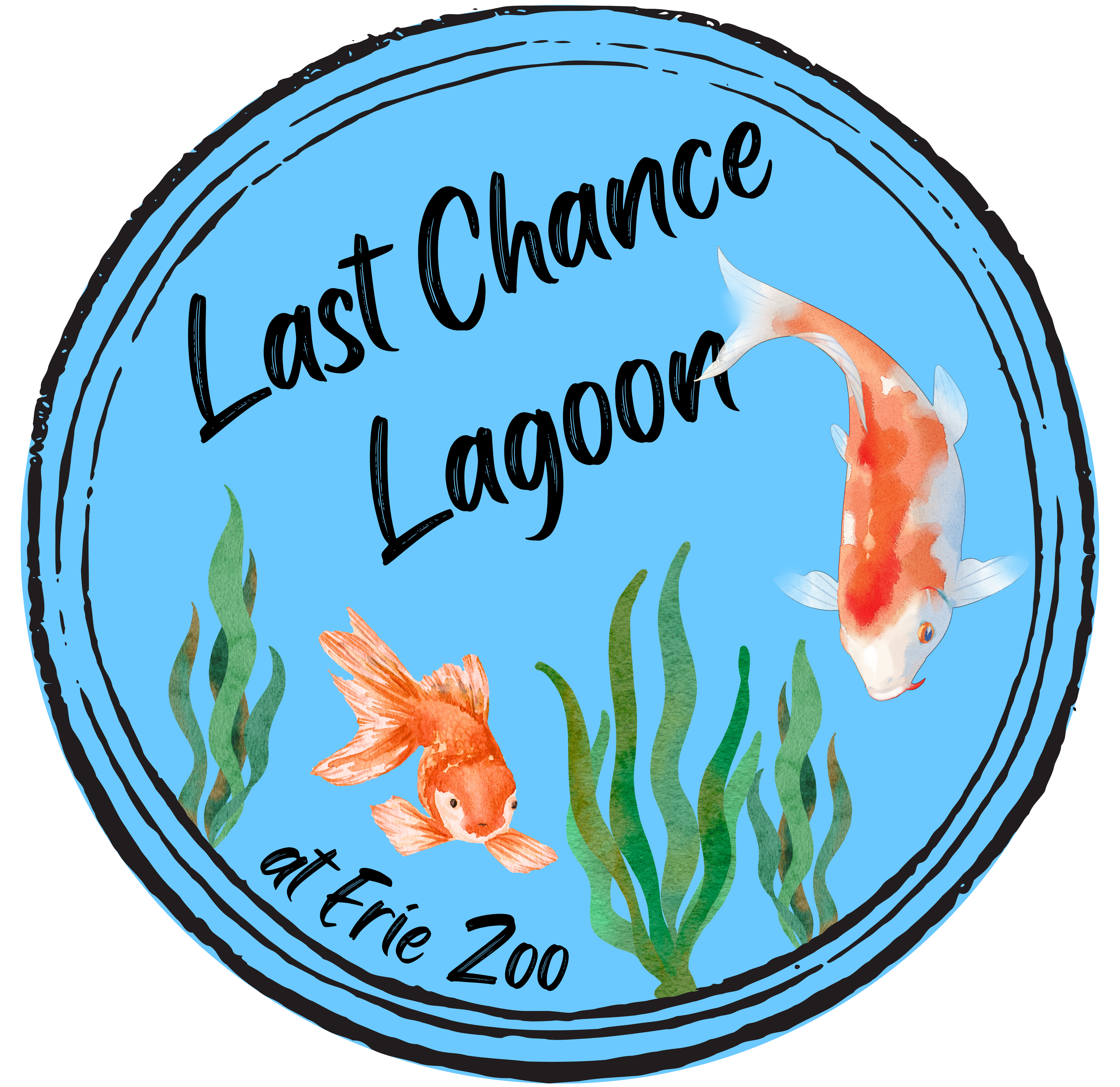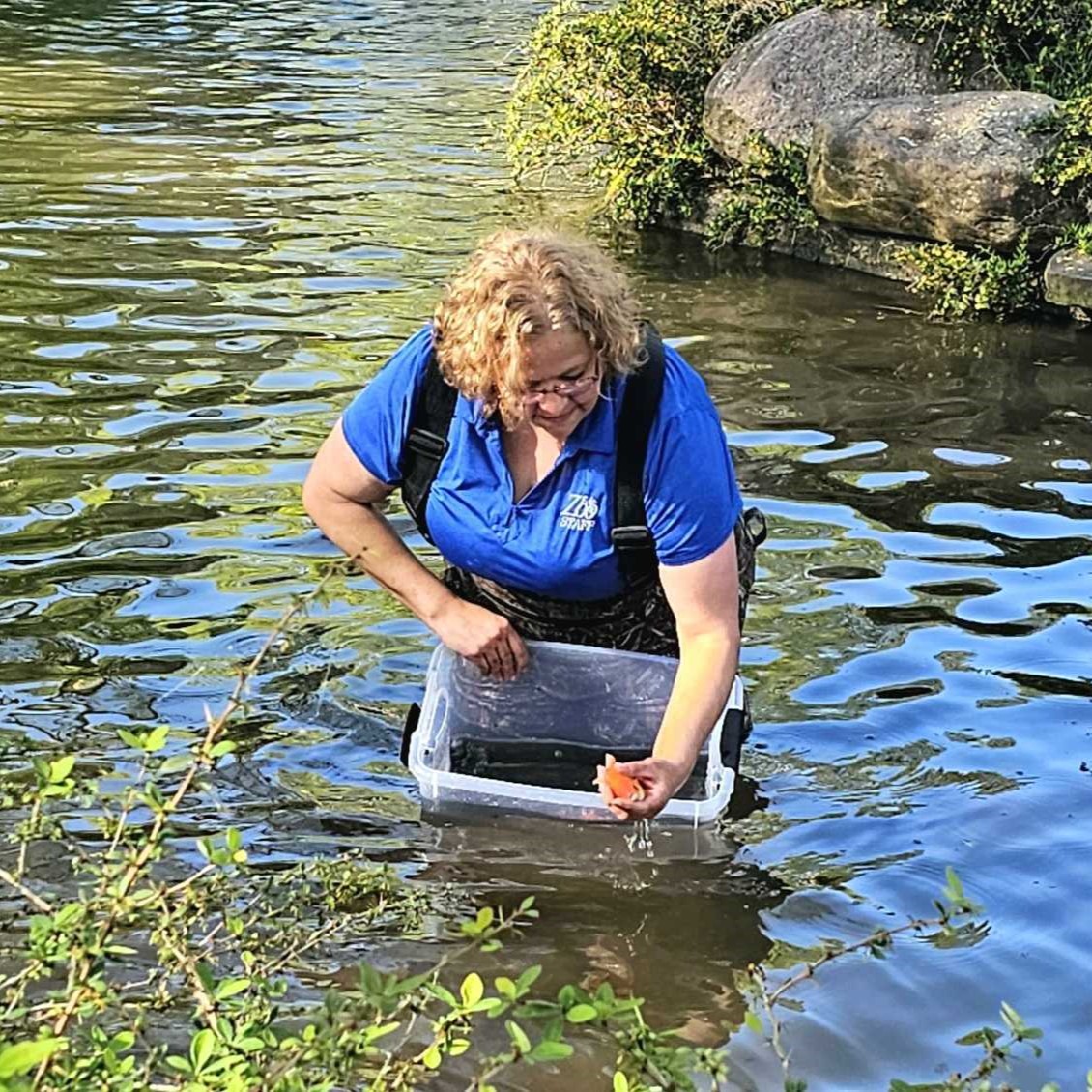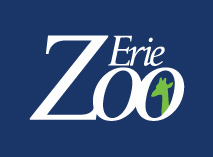Conservation Projects
The Erie Zoo is fortunate to support several programs designed to advance its conservation efforts. Combined efforts with other zoos and organizations can benefit animals in the wild and provide conservation education to our visitors. For more information on how to partner with us or get involved in one of our conservation projects, please email us at education@eriezoo.org.

Last Chance Lagoon
 Established in September 2023, the Last Chance Lagoon program offers a permanent sanctuary for unwanted goldfish or koi. Owners looking to surrender a fish must complete an intake form providing background information about the fish. Upon submission, a drop-off date and time are assigned for a mandatory 30-day quarantine. During this period, all fish undergo a thorough vet check, necessary treatment, and an exit exam to ensure their health before being introduced to the lagoon. The Last Chance Lagoon Program aims to prevent or diminish the influx of unwanted pet goldfish and koi into the Great Lakes Watershed. As of April 2024, the program has found homes for 52 goldfish.
Established in September 2023, the Last Chance Lagoon program offers a permanent sanctuary for unwanted goldfish or koi. Owners looking to surrender a fish must complete an intake form providing background information about the fish. Upon submission, a drop-off date and time are assigned for a mandatory 30-day quarantine. During this period, all fish undergo a thorough vet check, necessary treatment, and an exit exam to ensure their health before being introduced to the lagoon. The Last Chance Lagoon Program aims to prevent or diminish the influx of unwanted pet goldfish and koi into the Great Lakes Watershed. As of April 2024, the program has found homes for 52 goldfish.
History
It's believed that goldfish and koi have been popular pets in the United States since the early 1600s. Since their introduction, goldfish have been awarded as prizes at fairs and carnivals. These prized fish are bestowed upon both children and adults, with many of these recipients unaware of the requirements of caring for these fish. As the novelty fades quickly, numerous pet owners believe they are displaying compassion by releasing their goldfish and koi into natural habitats. Ultimately, any fish set free in a pond or stream could relocate within the watershed due to flooding or human activity, potentially leading them to Lake Erie.
Determining the number of koi and goldfish in Lake Erie is a challenging task. Over time, these fish can become quite difficult to spot in the waterways. As they reproduce, each generation loses more of its signature colorful appearance, eventually turning completely brown or yellow. Until the past decade, very few studies have been conducted on the migration patterns, spawning habits, and environmental impact of these fish. The data collected from these studies is crucial for wildlife officials to prevent goldfish and koi from causing permanent damage to the ecosystem. To prevent the situation from getting worse, it is imperative that pet owners rehome any unwanted fish responsibly. This can be accomplished by contacting local pet stores, aquarium hobbyists, or the Last Chance Lagoon program.
Environmental Ramifications
Goldfish and koi are considered invasive species in North America, even though they are popular pets in the region. They originally come from eastern Asia, including China, Hong Kong, Japan, and the Republic of Korea. These fish can cause substantial environmental damage when released into local watersheds. Unlike their confined counterparts, wild goldfish and koi have unlimited access to food, allowing them to grow to considerable sizes, often exceeding two feet in length and weighing over six pounds. With lifespans of 20 to 40 years, they demonstrate remarkable resilience in enduring harsh environmental conditions. Their prolific reproductive abilities and competitive nature can lead to decreased regional biodiversity as they outcompete native species for resources.
Some of the potential environmental impacts include:
- Introducing diseases and parasites that can spread to native fish. Goldfish and koi are carriers of koi herpesvirus, which poses a threat to local fish populations.
- Feeding on native fish eggs, young fish, amphibians, and plants. Being omnivores, they consume a wide range of food, disrupting the natural balance of the ecosystem.
- Producing up to 40,000 eggs annually, significantly more than most freshwater fish, and capable of crossbreeding with various wild carp species. With no natural predators, a large portion of their offspring survive to reproductive age, leading to an overpopulation of the water source.
- Stirring up sediment and damaging aquatic plant life. As bottom feeders, goldfish and koi disturb the base, essential for native fish as a food and shelter source.
- Disturbing compacted sediment containing dormant nutrients like phosphorus. Agitation of the base can release phosphorus, causing harmful algae blooms detrimental to humans and animals.
- Disrupting sediment also produces murky water, hindering sunlight penetration. This lack of sunlight causes plant death, removing food sources and habitats for native aquatic species.
How to Help
- Schedule an appointment to surrender your unwanted goldfish and koi. Help protect our watershed by rehoming your fish responsibly.
- Contribute financially to the Last Chance Lagoon Project. Each fish's quarantine costs approximately $200.
- Become a volunteer. Your efforts aid in spreading awareness about the Last Chance Lagoon initiative.
- Donate pet store or Amazon gift cards. Your support enables us to acquire essential supplies for the lagoon and our aquatic residents.
For more information, please contact Heather Gula, Education Director and Conservation Committee Chair, at hgula@eriezoo.org or call 814-864-4091 ext. 1123



